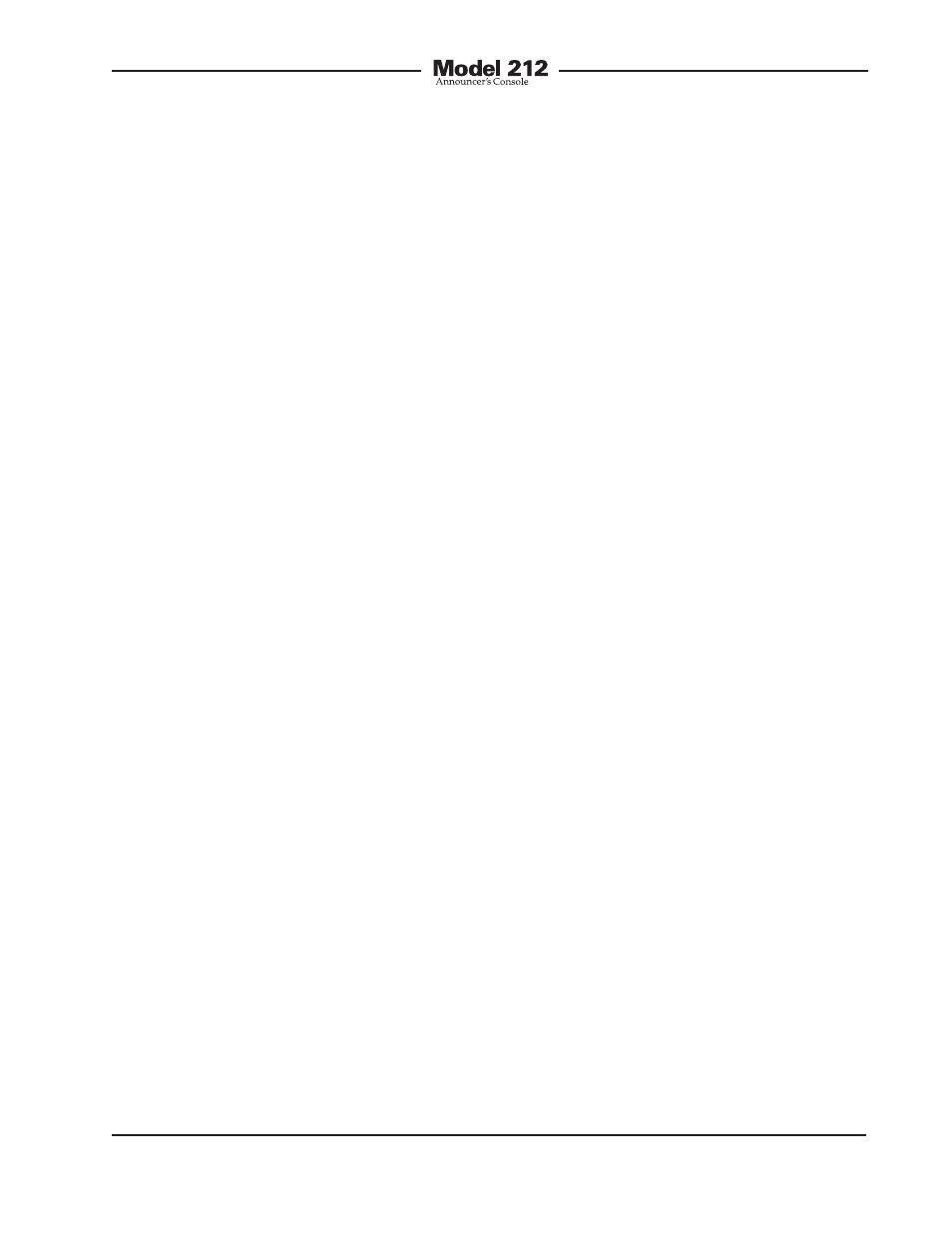Studio Technologies M212-00151 User Manual
Page 25

Model 212 User Guide
Issue 2, June 2006
Studio Technologies, Inc.
Page 26
output’s right channel. The control on the
right adjusts the left channel.
When in the level/level mode, and the
minimum output level is set for –40 dB,
turning each control to its fully counter-
clockwise position will place its respective
output level 40 dB below its maximum.
This setting ensures that talent will never
be fully “isolated” from potentially impor-
tant cue signals. If present on the Model
212’s input and assigned to the head-
phone channels, some audio signal will
always be present on the headphone
output. If set to the full mute mode, turning
each control to its fully counterclockwise
position will cause its respective output to
fully mute.
Each level control has a mechanical
step (detent) that is located at the halfway
(50%) position of its rotation range. This is
intended to serve as an aid to Model 212
users. In an ideal installation, setting the
controls to their detent position will result
in a comfortable headphone output level.
The user, in response to a changing op-
erating environment, can then move the
level controls to get more or less level as
desired. The detent position will always
remain as a useful reference point. To
achieve this condition the audio levels
on the selected cue sources would have
to be adjusted as required. This is some-
what counter to the usual mentality of just
providing the user with whatever level
comes up by default. Spending a few
extra minutes “trimming” the audio levels
can result in much happier, and more pro-
ductive, talent.
Level/Balance Mode
When set to the level/balance mode, the
two controls operate together to adjust
the desired headphone output level. The
control on the left adjusts the overall level
of both the left and right channels. The
balance control, located on the right,
adjusts the relative left/right level bal-
ance. In this mode the controls operate
in a manner reminiscent of a consumer
audio amplifier or receiver. If set to the
normal mode, rotating the balance control
in the counterclockwise direction reduces
the level of the right channel providing
the user with more perceived level in the
left channel. If set to the reverse mode,
rotating the balance control in the coun-
terclockwise direction reduces the level
of the left channel providing the user with
more perceived level in the right channel.
When in the level/balance mode and the
minimum output level is set to –40 dB,
turning the level control to its fully coun-
terclockwise position will place both head-
phone output channels to 40 dB below
maximum. This ensures that talent will
never be fully “isolated” from potentially
important cue signals. In addition, rotat-
ing the balance control to either its fully
clockwise or fully counterclockwise posi-
tion will cause the applicable channel to
be 40 dB below its maximum. If set to the
full mute mode, turning the level control
to its fully counterclockwise position will
cause both the left and right channels to
fully mute. In addition, rotating the balance
control to either its fully clockwise or fully
counterclockwise position will cause the
applicable channel to fully mute.
Each control has a mechanical step
(detent) that is located at the halfway
(50%) position of its rotation range. The
balance control will typically be set to its
center, detent position, making the level
of the left and right channels equal. In an
ideal installation, the level control can also
be set to its detent position and provide a
